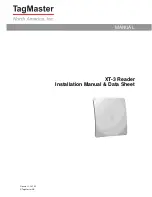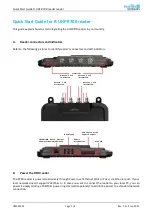
Speidel's Braumeister
Page 20 of 32
cool, stored wort or better still, determine the exact time to decant by constantly
measuring the remaining extract. In the case of bottom-fermenting beer, this is at
about 0.4 °Plato and with top-fermenting beer at about 0.8 °Plato above the final
fermentation figure (this can be determined by a rapid fermentation test outside the
vessel). The colder the primary fermentation, the more carbon dioxide is already
bound during the main fermentation. Likewise, there is more carbon dioxide present in
a stainless steel tank compared to a plastic tank. This is why the information stated
above needs to be adjusted upwards or downwards.
The best option for the secondary fermentation is using bottles, but particularly beer
kegs. At this stage, too, sterile work conditions are essential. Therefore before use, all
utensils must be thoroughly cleaned and disinfected. These preparations should take
place during the fermentation process or even earlier, so that on the day chosen for
racking you do not have to rush unnecessarily and can concentrate on what is
important.
If you are using thawed wort (as an alternative to precisely timed racking), this is now
carefully added to the freshly-brewed beer in the fermenter 1-2 hours before racking.
This allows stirred-up sediment to settle again. Racking can be done with a hose which
is pushed onto the outlet valve and which reaches to the bottom of the fermenter. This
avoids too much frothing and not too much carbonic acid is lost. The containers are
filled 90-95% full (fermentation head space) and immediately sealed. Also take care
here that the sediment is not disturbed in the fermenting vessel and then decanted with
the beer. After racking, store the beer for another 1-2 days at the same temperature as
for the primary fermentation. Afterwards it is stored at 0-10°C. Important note: During
secondary fermentation it is essential to briefly relieve the pressure in the bottles after
roughly 12 hours and then once more in the first 2-3 days to avoid excess pressure due
to CO2 build-up. Store the bottles upright so that cloudy sediment can settle on the
bottom. This method of beer production results in a naturally cloudy beer. In earlier
times, a nourishing beer was always naturally cloudy and even nowadays is still to be
preferred because it contains the valuable B vitamins locked up in the yeast cells. The
first tasting can be enjoyed after a storage period of from 4 to 6 weeks. A somewhat
longer storage period leads to a more fully-developed taste.
Your personal home-brewed beer is now ready and you can pour it out suitably cooled
and enjoy it with your friends! Cheers!













































